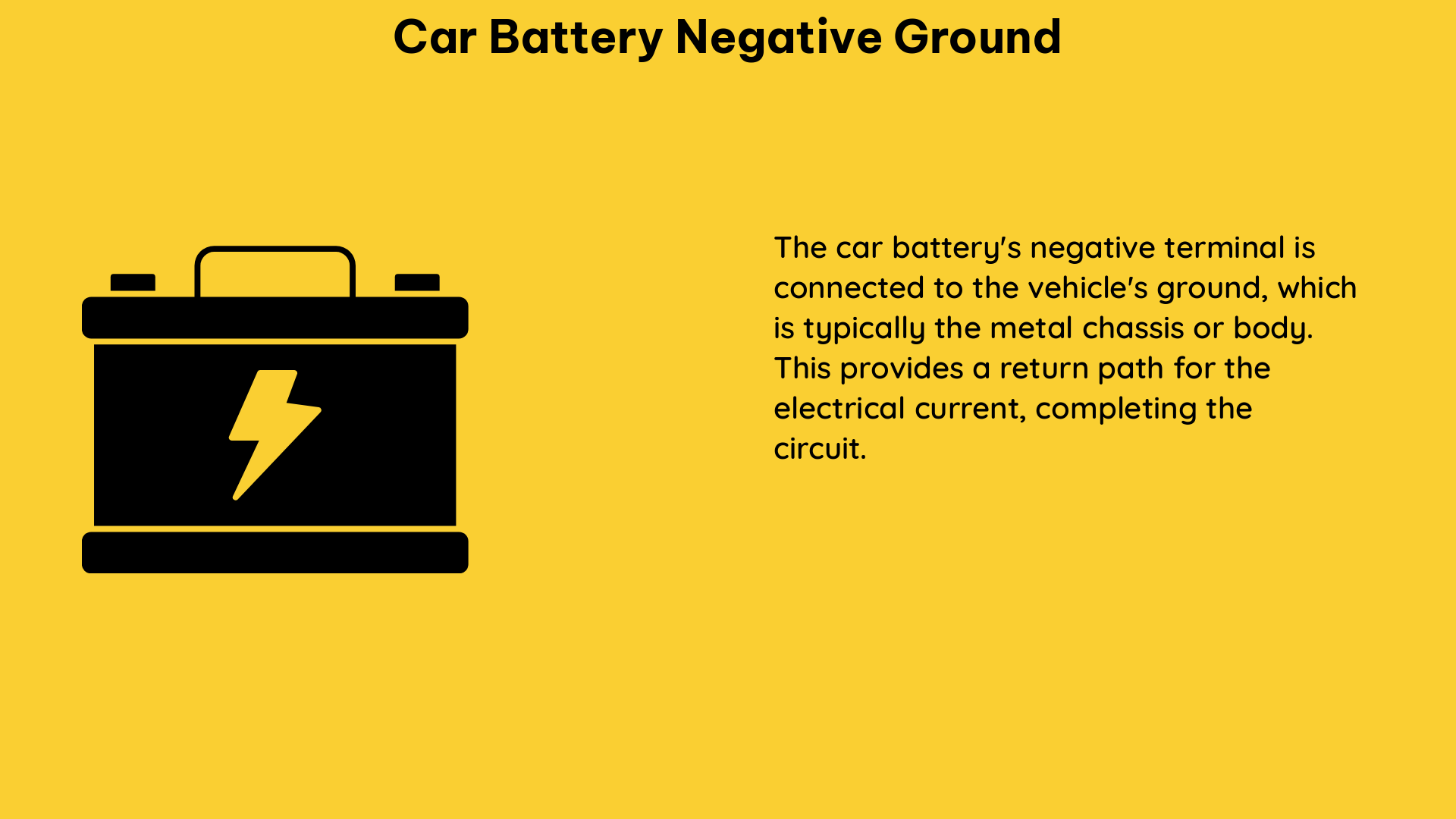The car battery negative ground system is a critical component of the electrical system in modern vehicles. This configuration, also known as a unipolar ground system, provides a common reference point for all electrical components, ensuring proper grounding and improving overall system performance and reliability.
Advantages of Negative Ground System
- Common Reference Point: The negative ground system establishes a common reference point for all electrical systems in the car, allowing for proper grounding of all components.
- Reduced Electrical Noise: The car body or chassis acts as a ground plane, helping to reduce the amount of electrical noise generated by the car’s electrical systems. This is particularly important for sensitive electronic equipment, such as modern infotainment systems.
- Easier Diagnostics: The negative ground system makes it easier to diagnose electrical problems in the car. By measuring the voltage between the negative terminal of the battery and various ground points, technicians can identify voltage drops or other issues that may be causing electrical problems.
Technical Specifications

- Battery Voltage: A typical car battery has a voltage of around 12.6 volts when fully charged.
- Negative Terminal Connection: The negative terminal of the battery is connected to the car body or chassis using a thick copper cable, designed to handle the high currents generated by the car’s electrical systems. This cable is usually secured using a bolt or other fastener, and it is important to ensure a clean and secure connection to prevent electrical noise or interference.
- Grounding for Jump-starting: When jump-starting a car with a dead battery, it is crucial to connect the negative cable to a grounded point on the car, rather than directly to the negative terminal of the battery. This is because the negative terminal of a dead battery can produce hydrogen gas, which can be ignited by a spark. Connecting the negative cable to a grounded point on the car helps to avoid any issues with sparks or electrical noise.
Voltage Measurements
- Battery Positive to Chassis Ground: The voltage between the positive terminal of the battery and the car’s chassis (metal ground) should be approximately 12.6 volts when the battery is fully charged.
- Battery Negative to Chassis Ground: The voltage between the negative terminal of the battery and the car’s chassis (metal ground) should be close to 0 volts, as the negative terminal is directly connected to the chassis.
- Voltage Drop Measurement: To diagnose electrical issues, technicians can measure the voltage drop between the negative terminal of the battery and various ground points in the car. A significant voltage drop may indicate a problem with the ground connection or a faulty component.
Importance of Proper Grounding
Proper grounding is essential for the safe and reliable operation of a car’s electrical system. A well-designed negative ground system ensures that all electrical components are properly referenced to a common ground, reducing the risk of electrical noise, interference, and potential safety hazards.
Conclusion
The car battery negative ground system is a fundamental aspect of modern vehicle electrical systems. By providing a common reference point, reducing electrical noise, and facilitating easier diagnostics, the negative ground system plays a crucial role in ensuring the safe and reliable operation of a car’s electrical components. Understanding the technical specifications and measurement techniques associated with this system is essential for both DIY enthusiasts and professional technicians.
References:
- Voltage present between Battery Positive and Chassis (metal) Ground
- Can someone help me feel safe by pointing at what’s the best place to ground the negative for the dead battery to jump start the car?
- Jump-starting a car: connecting black to the engine block

The lambdageeks.com Core SME Team is a group of experienced subject matter experts from diverse scientific and technical fields including Physics, Chemistry, Technology,Electronics & Electrical Engineering, Automotive, Mechanical Engineering. Our team collaborates to create high-quality, well-researched articles on a wide range of science and technology topics for the lambdageeks.com website.
All Our Senior SME are having more than 7 Years of experience in the respective fields . They are either Working Industry Professionals or assocaited With different Universities. Refer Our Authors Page to get to know About our Core SMEs.